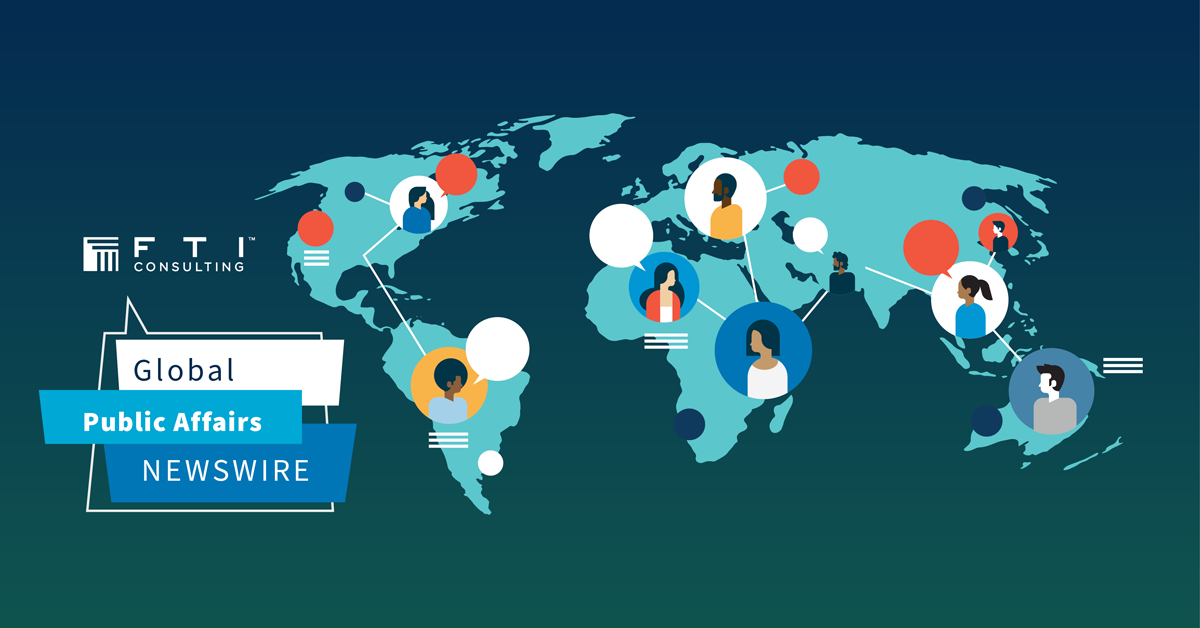4 Key Trends in HPV Prevention to Celebrate International HPV Awareness Day
Managing Director, U.S. Public Affairs, Healthcare & Life Sciences
[email protected]
At FTI Consulting, International HPV Awareness Day is an opportunity to reflect on growing efforts to reduce the prevalence and impact of the human papillomavirus (HPV) and to celebrate our work with clients, partners and thought leaders toward the elimination of HPV-related cancers.
HPV impacts a staggering 13 million Americans each year, but the prevalence of HPV infections and attributable cancers has dropped drastically since the introduction of the HPV vaccine.[1] HPV vaccination rates among adolescents have increased steadily, reaching almost 60% in 2022, but that is still a far cry from the Healthy People 2030 target of 80%.[2] While vaccine hesitancy and access barriers were both illuminated and exacerbated during the COVID-19 pandemic, the good news is that elimination of HPV-related cancers is possible. A wide variety of organizations across the country are using educational and communications campaigns, convening diverse partners through longstanding and new coalitions and roundtables, and performing qualitative and quantitative research to underscore the importance of safeguarding children, adolescents, teens and adults against HPV.
FTI Consulting has partnered with many of these organizations to help strengthen their cancer-prevention messaging, inform their policy priorities, and foster collaboration among key partner and stakeholder audiences. Here are four topics that are key focus areas in the collective effort to increase HPV vaccination in the United States, as well as a few resources that FTI Consulting has helped develop in collaboration with organizations working to prevent HPV and HPV cancers including the St. Jude HPV Cancer Prevention Program, the National HPV Vaccination Roundtable, the American Cancer Society, the Adult Vaccine Access Coalition (AVAC) and others.
Access
Whether children and adolescents get vaccinated against HPV is often dependent on their access to immunization providers. Studies show that longer travel distances to immunization providers can negatively impact childhood vaccination rates – especially in rural areas.[3] Our partners have found that expanding existing vaccine access programs to reach children in the most underserved areas could help increase HPV vaccination uptake and completion rates to the desired levels.
Through the Vaccines for Children (VFC) program, for instance, participating providers can administer Advisory Committee of Immunization Practices (ACIP) recommended vaccines, including the HPV vaccine, at no cost to uninsured or underinsured children under the age of 18,[4] therefore addressing and reducing cost and access barriers to vaccination. In a policy analysis for St. Jude Children’s Research Hospital on policy factors driving HPV vaccination coverage in the United States, FTI Consulting found that access to participating VFC providers was positively correlated with increased HPV vaccination initiation and series completion. By bolstering provider recruitment efforts for the VFC program and implementing policy changes that allow for greater diversity in the types of providers eligible to participate in the VFC program, we can increase vaccine access points and eventually improve HPV vaccination rates in some of the country’s most underserved, under-resourced and under-vaccinated communities.[5]
- Read FTI Consulting’s and St. Jude Children’s Research Hospital’s “Updated Analysis of Public Policy Decisions and Factors Driving HPV Vaccination Coverage in the United States.”
Affordability
Today, most insurance plans cover HPV vaccination without cost sharing. Children and adolescents enrolled in Medicaid and the Children’s Health Insurance Program (CHIP) can receive the HPV vaccine at no cost,[6] and 9 out of 10 individuals enrolled in a commercial plan will pay no out-of-pocket costs for the vaccine.[7] In 2022, the Biden Administration took steps to remove cost barriers to vaccination for lower-income adults enrolled in Medicaid and Medicare Part D plans by passing the Inflation Reduction Act (IRA) which eliminated out-of-pocket cost-sharing for ACIP-recommended vaccines for adults, including the HPV vaccine.[8]
Last year, FTI Consulting partnered with the Adult Vaccine Access Coalition (AVAC) to estimate the potential cost savings for individuals and states as a result of this policy change and found that individuals could save thousands of dollars in out-of-pocket costs for vaccines and states could realize millions of dollars in annual savings by preventing a number of vaccine-preventable diseases. The elimination of out-of-pocket costs for HPV vaccination among lower-income adults enrolled in these programs provides additional cost savings for countless individuals across the country.
- Read FTI Consulting’s and AVAC’s fact sheets on Removing Out-of-Pocket Costs for Adult Vaccines in Arkansas, Florida, South Carolina, Georgia and Texas.
Education
To achieve complete elimination of HPV-related cancers, all key audiences, partners and stakeholders must be engaged around and educated on the HPV vaccine as cancer prevention. FTI Consulting and St. Jude Children’s Research Hospital found that an effective recommendation from a healthcare provider was the biggest predictor of HPV vaccination uptake among children and adolescents,[9] meaning that provider communication, education and training on HPV vaccination is crucial to improving vaccination rates.
In 2023, FTI Consulting supported the National HPV Vaccination Roundtable in convening its first Health Plan Summit, where more than 20 plans came together to discuss current and future efforts to increase HPV vaccination. Provider education was a central focus during the event, where plans expressed a need to emphasize the framing of the HPV vaccine as a cancer prevention method as well as to reiterate the benefits of prioritizing initiation of the vaccine series at age 9. Plans discussed ways to leverage and expand existing provider resources such as written materials, videos, webinar recordings, quality improvement trainings, continuing medical education programs and other educational resources, many of which were developed by participating plans and other cancer prevention partners.
- View page 5 of the National HPV Vaccination Roundtable’s 2024 Impact Report and Action Plan for a summary of the Health Plan Summit, and look out for the National HPV Vaccination Roundtable – Payor Action Guide, scheduled for release in March 2024.
Coverage
Health insurance coverage matters. Uninsured and underinsured individuals who lack access to comprehensive coverage face specific barriers to HPV vaccination. A recent CDC study found that HPV vaccination rates were lowest among uninsured children compared to children covered by private health insurance, Medicaid or other government programs,[10] and our 2023 updated policy analysis with St. Jude revealed that eligibility levels for Medicaid among children aged 6 to 18 years are correlated with HPV vaccination coverage, demonstrating that enrollment in comprehensive and continuous coverage is essential to vaccine initiation and series completion.
While the affordability that coverage provides is important, comprehensive coverage provided by health plans often includes benefits and services that address other barriers to care and vaccination, such as care coordination (including appointment scheduling and vaccination reminders), provider and patient incentive programs for vaccination and educational resources. During the 2023 Health Plan Summit, health plans highlighted the evidence-based interventions they use to educate and remind patients and providers about HPV vaccination. The benefits and services provided to individuals enrolled in commercial, Medicaid, marketplace and other plans are critical to increasing HPV vaccination uptake.
- Read FTI Consulting’s and the St. Jude Cancer Prevention Program’s infographic on Preventing HPV Cancers Through Increased Medicaid Eligibility.
Conclusion
On International HPV Awareness Day, we are grateful for the opportunity to partner, collaborate with and support a number of organizations leading and driving change in HPV cancer prevention. These four factors are central to our collective efforts, and we are excited to continue collaborating and contributing to efforts to eliminate HPV-related cancer in the United States.
Please reach out if you’d like to discuss the content of this article or to learn more about our Healthcare & Life Sciences offerings.
[1] “The HPV Vaccine: Access and Use in the U.S.,” KFF (July 12, 2021), https://www.kff.org/womens-health-policy/fact-sheet/the-hpv-vaccine-access-and-use-in-the-u-s/
[2] “Increase the proportion of adolescents who get recommended doses of the HPV vaccine,” Healthy People 2030 (Last accessed February 28, 2024), https://health.gov/healthypeople/objectives-and-data/browse-objectives/vaccination/increase-proportion-adolescents-who-get-recommended-doses-hpv-vaccine-iid-08
[3] Alexandria Albers, Juthika Thaker, and Sophia Newcomer, “Barriers to and facilitators of early childhood immunization in rural areas of the United States: A systematic review of the literature,” National Library of Medicine; National Institutes of Health (June 2022), https://www.ncbi.nlm.nih.gov/pmc/articles/PMC9152779/
[4] “Vaccines For Children (VFC) Program Information for Providers,” Centers for Disease Control and Prevention (Last accessed February 28, 2024), https://www.cdc.gov/vaccines/programs/vfc/providers/index.html
[5] “Policy Report: Updated Analysis of Public Policy Decisions and Factors Driving HPV Vaccination Coverage in the United States, 2023,” HPV Cancer Prevention Program; St. Jude Children’s Research Hospital (September 2023), https://www.stjude.org/research/comprehensive-cancer-center/hpv-cancer-prevention-program/analysis-hpv-vaccination-coverage-us.html
[6] “HPV Vaccinations and Young Adults,” Office on Women’s Health; U.S. Department of Health and Human Services (Last accessed February 28, 2024), https://www.womenshealth.gov/hpvvaccine
[7] “Gardasil 9,” Merck (Last accessed February 28, 2024), https://www.gardasil9.com/adults/cost/
[8] Juliette Cubanski, Tricia Neuman, and Meredith Freed, “Explaining the Prescription Drug Provisions in the Inflation Reduction Act,” KFF (June 24, 2023), https://www.kff.org/medicare/issue-brief/explaining-the-prescription-drug-provisions-in-the-inflation-reduction-act/
[9] “HPV Vaccination Information for Health Professionals,” American Cancer Society (Last accessed February 28, 2024), https://www.cancer.org/health-care-professionals/hpv-vaccination-information-for-health-professionals.html
[10] “Human Papillomavirus Vaccination Coverage in Children Ages 9–17 Years: United States, 2022,” Centers for Disease Control and Prevention (February 2024), https://www.cdc.gov/nchs/products/databriefs/db495.htm
The views expressed in this article are those of the author(s) and not necessarily the views of FTI Consulting, its management, its subsidiaries, its affiliates, or its other professionals.
©2024 FTI Consulting, Inc. All rights reserved. www.fticonsulting.com






